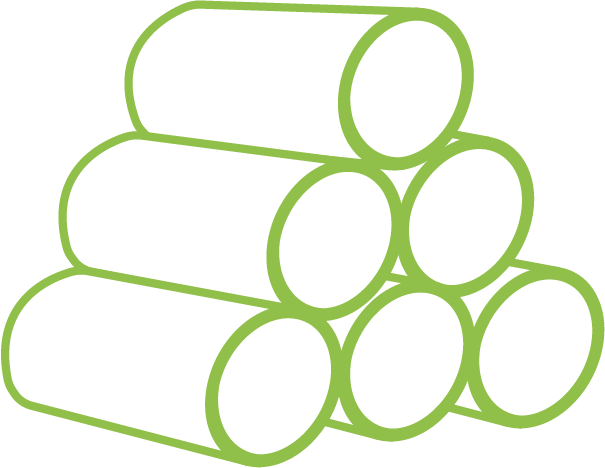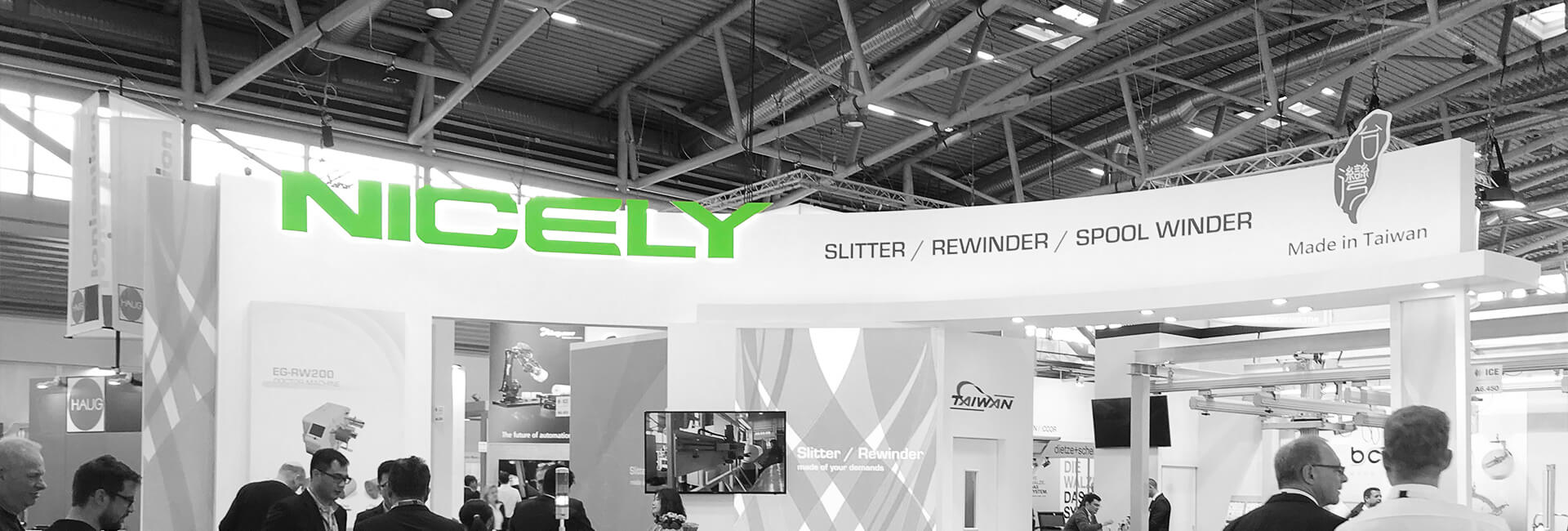10 Key Maintenance Tasks for Your Slitter Rewinder
Customer Care 2024-10-18Slitter rewinders play a pivotal role in cutting and rewinding materials across various industries, including plastics, paper, film, metal foils, nonwoven textiles, and electrical insulations. Regular maintenance for slitter rewinders is vital not only for ensuring optimal performance but also for extending the lifespan of this critical equipment. This guide outlines 10 key maintenance tasks that owners should prioritize to keep their slitter rewinders operating at peak efficiency.

Slitting section on Nicely’s surface winding slitter rewinder (EG-2003E model)
1. Lubrication of Moving Parts
- Why it matters:Slitter rewinders consist of multiple moving components such as gears, rollers, and bearings, which require regular lubrication to minimize friction and wear.
- How to perform:Use manufacturer-recommended lubricants and apply them to rollers, gears, and bearings at specified intervals.
- Routine checkpoints:Look for signs of wear or inadequate lubrication, such as unusual noises or increased friction.
2. Blade Inspection and Replacement
- Why it matters: Sharp blades are crucial for achieving clean cuts; dull or damaged blades can lead to jagged edges and compromised product quality.
- How to perform: Periodically check blade sharpness and replace or sharpen blades showing signs of wear.
- Routine checkpoints: Examine for uneven wear, nicks, or chips, and ensure that the blade holder is properly aligned.
3. Roller Alignment and Tension Adjustment
- Why it matters: Proper tension and alignment are essential for ensuring even cuts and rewinding without distortion or wrinkling.
- How to perform: Inspect and adjust roller tension regularly based on the materials being processed.
- Routine checkpoints: Continuously monitor tension settings and adjust them according to changes in material thickness and type.
4. Cleaning of Machine Components
- Why it matters: Dust, debris, and adhesive buildup can interfere with machine performance.
- How to perform: Clean all parts, especially the cutting and rewinding areas, with non-abrasive cleaning solutions.
- Routine checkpoints: Conduct a thorough cleaning every week, especially if processing adhesive-backed materials or other debris-prone products.
5. Electrical System Check
- Why it matters: An intact electrical system is crucial for safe and efficient machine operation.
- How to perform: Inspect wiring and connections for any signs of wear or damage.
- Routine checkpoints: Conduct checks every three months to ensure that all connections are secure and functioning properly.
6. Bearing and Belt Inspections
- Why it matters: Bearings and belts are essential for the smooth operation of your slitter rewinder.
- How to perform: Regularly check for wear or improper tensioning of bearings and belts.
- Routine checkpoints: Monthly inspections can help catch any issues before they lead to significant downtime.
7. Detailed Mechanical Parts Maintenance Outline
-
Guide Rollers
➢Monthly Maintenance:Inspect for wear and damage, check for smooth rotation, and lubricate bearings if necessary.
➢Semi-Annual Maintenance:Conduct detailed inspections for cracks or deformities, ensure installation tightness and alignment, and inspect the wear and rotation of each idler roller. -
Lubrication Parts
➢Monthly Maintenance:Implement oil supply management and lubricate rotating parts (e.g., bearings, chains).
➢Semi-Annual Maintenance:Change and add hydraulic oil, checking for leaks or oil degradation in lubrication systems. -
Chains & Belts
➢Monthly Maintenance: Lubricate the chain, check the chain sag (approximately 2% of the distance between sprockets), and inspect belt tension and wear.
➢Semi-Annual Maintenance:Measure chain length; replace if it increases by 1.5%. Check tension and wear of transmission chains and belts.

Gears lining up for assembly at Nicely’s facility.
8. Rewind & Knife Shaft Maintenance
- Monthly Maintenance:Check the airtightness of the rewind shaft to prevent air leaks that could affect performance.
- Semi-Annual Maintenance:Check precision and airtightness of the rewind shaft and inspect parallelism of the top and bottom knife shafts to guarantee accurate cutting.
9. Gearbox Maintenance
- Monthly Maintenance:Check the oil level, inspect for any leaks or unusual noises, and ensure the ventilation system is functioning properly.
- Semi-Annual Maintenance:Change gearbox oil after 300 hours of operation, then every 2000 hours thereafter.
10. Conducting Full System Inspections
Why it matters: While regular maintenance focuses on specific components, periodic full-system inspections are necessary to ensure overall machine health.
- Monthly: Inspect all belts, gears, and motors for wear and tear.
- Quarterly: Test the machine’s electronic components, such as sensors and controls, to ensure proper function.
- Annually: Conduct a professional audit of the machine to identify potential upgrades or needed part replacements.
Comprehensive Slitter Rewinder Maintenance Schedule: Monthly and Semi-Annual Tasks
| Maintenance Task | Monthly Maintenance | Semi-Annual Maintenance |
|---|---|---|
Lubrication of Moving Parts  |
• Lubricate rollers, gears, and bearings with manufacturer-recommended lubricants. • Check for unusual noises or increased friction indicating inadequate lubrication. |
• Conduct a thorough inspection of all moving parts. • Reapply lubricant to all critical areas, ensuring consistent performance. |
Blade Inspection and Replacement |
• Inspect blade sharpness. • Replace or sharpen if there is uneven wear, nicks, or chips. |
• Conduct a complete review of the blade system and holders. • Replace blades that are reaching the end of their lifespan. |
Roller Alignment and Tension  |
• Inspect and adjust roller tension based on materials being processed. • Monitor tension settings and adjust for material thickness or type. |
• Perform a precision alignment of all rollers using specialized tools to ensure long-term performance. • Verify that tension is consistent across various material types. |
Cleaning of Machine Components  |
• Thoroughly clean the cutting and rewinding areas. • Focus on removing dust, debris, and adhesive buildup using non-abrasive cleaning solutions. |
• Perform a deep clean of internal and external components, especially in areas where debris tends to accumulate. |
Electrical System Check 
|
• Inspect wiring and connections for wear or damage. • Ensure all connections are secure and functioning properly. |
• Conduct a detailed inspection of all electronic components. • Test all sensors and controls to ensure they are working correctly. |
Bearing and Belt Inspections  |
• Check for wear and improper tensioning of bearings and belts. |
• Replace worn bearings and belts that show signs of significant wear or aging. • Re-tension belts to factory specifications. |
Guide Rollers |
• Inspect for wear and damage. • Check for smooth rotation and lubricate bearings if necessary. |
• Conduct detailed inspections for cracks or deformities. • Ensure tightness and alignment. • Inspect wear and rotation of each idler roller. |
Lubrication Parts |
• Manage oil supply. • Lubricate rotating parts (bearings, chains). |
• Change/add hydraulic oil. • Check for leaks or oil degradation in lubrication systems. |
Chains & Belts |
• Lubricate the chain. • Check chain sag (~2% of the distance between sprockets). • Inspect belt tension and wear. |
• Measure chain length; replace if increased by 1.5%. • Check tension and wear of transmission chains and belts. • Replace worn drive belts. |
Rewind / Knife Shaft Maintenance  |
• Check airtightness of the rewind shaft to prevent air leaks. |
• Verify precision and airtightness of the rewind shaft. • Inspect the parallelism of top and bottom knife shafts for accurate cutting. |
Gearbox Maintenance |
• Check oil level. • Inspect for leaks or unusual noises. • Ensure the ventilation system is functioning properly. |
• Change gearbox oil after 300 hours of operation, then every 2000 hours thereafter. • Inspect the internal components for wear or contamination. |
Hydraulic / Pneumatic System |
• Manage oil supply. • Drain water from the pneumatic system. • Check airtightness on piping. |
• Change hydraulic oil. • Inspect for leaks, check pressure settings, and test for efficient performance. |
Safety Features |
• Test emergency stop buttons and safety interlocks. • Inspect safety guards and covers for integrity. |
• Conduct a full safety system check, including light curtains and other protective devices. • Perform an audit of safety equipment functionality. |
Structural Integrity |
• Inspect frame and supports for wear or damage. • Check that all mounting bolts are secure. |
• Examine structural integrity, including welds. • Perform necessary repairs to maintain stability. |
Full System Inspections  |
• Inspect all belts, gears, and motors for wear and tear. |
• Conduct a professional audit of the machine to identify potential upgrades or needed part replacements. • Test machine efficiency and overall functionality. |
By following these key maintenance tasks, you can significantly enhance the performance and longevity of your slitter rewinder. Implementing a structured maintenance plan will not only reduce downtime but also ensure that your equipment operates at its best, delivering high-quality results for your business.

EG-8002 Series Duplex Shaft Center-Winding Slitter Rewinder Installed at a Customer's Factory in Germany
Maximize Efficiency and Longevity: The Importance of Partnering with Expert Slitter Rewinder Manufacturers
Nicely Machinery, a leading slitter rewinder machine manufacturer, understands the challenges that come with maintaining optimal performance. For businesses, understanding how slitting machine manufacturers add value for their customers is crucial when choosing maintenance services or investing in upgrades. By partnering with experienced manufacturers, you can access tailored solutions that address unique operational needs, whether through advanced training, retrofit options, or comprehensive maintenance support.
Prioritizing regular maintenance and investing in a reliable slitter rewinder can significantly extend the lifespan of your equipment while maximizing efficiency and product quality. Managing a successful slitting and rewinding operation requires attention to detail and ongoing care, which are key to achieving long-term success. By keeping your slitter rewinder in optimal condition, you’ll experience the benefits of reduced downtime, consistent output, and improved profitability.
Ready to enhance your slitting and rewinding operations? Contact us today to learn more about our expert support and customized solutions tailored to your needs.



